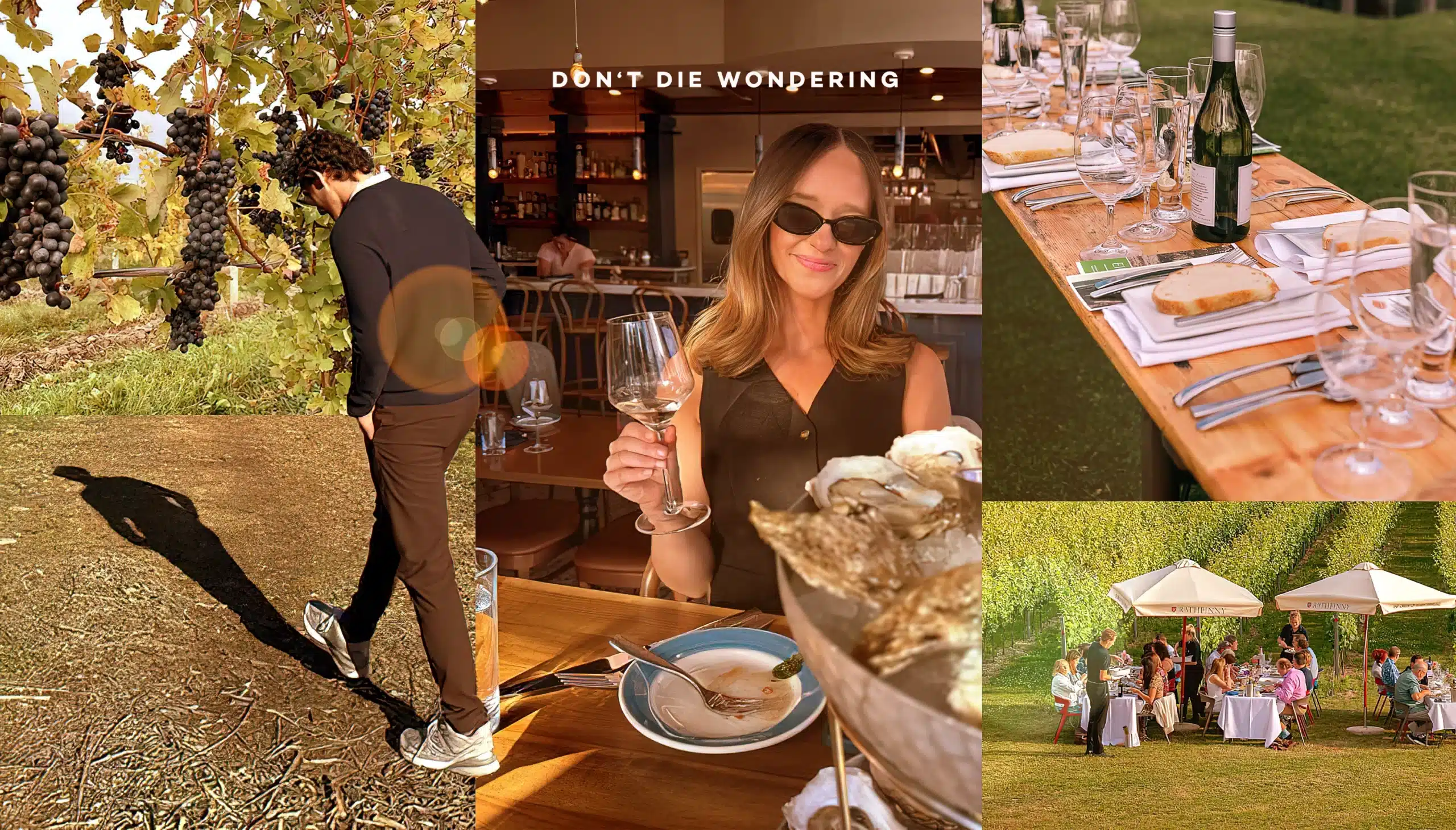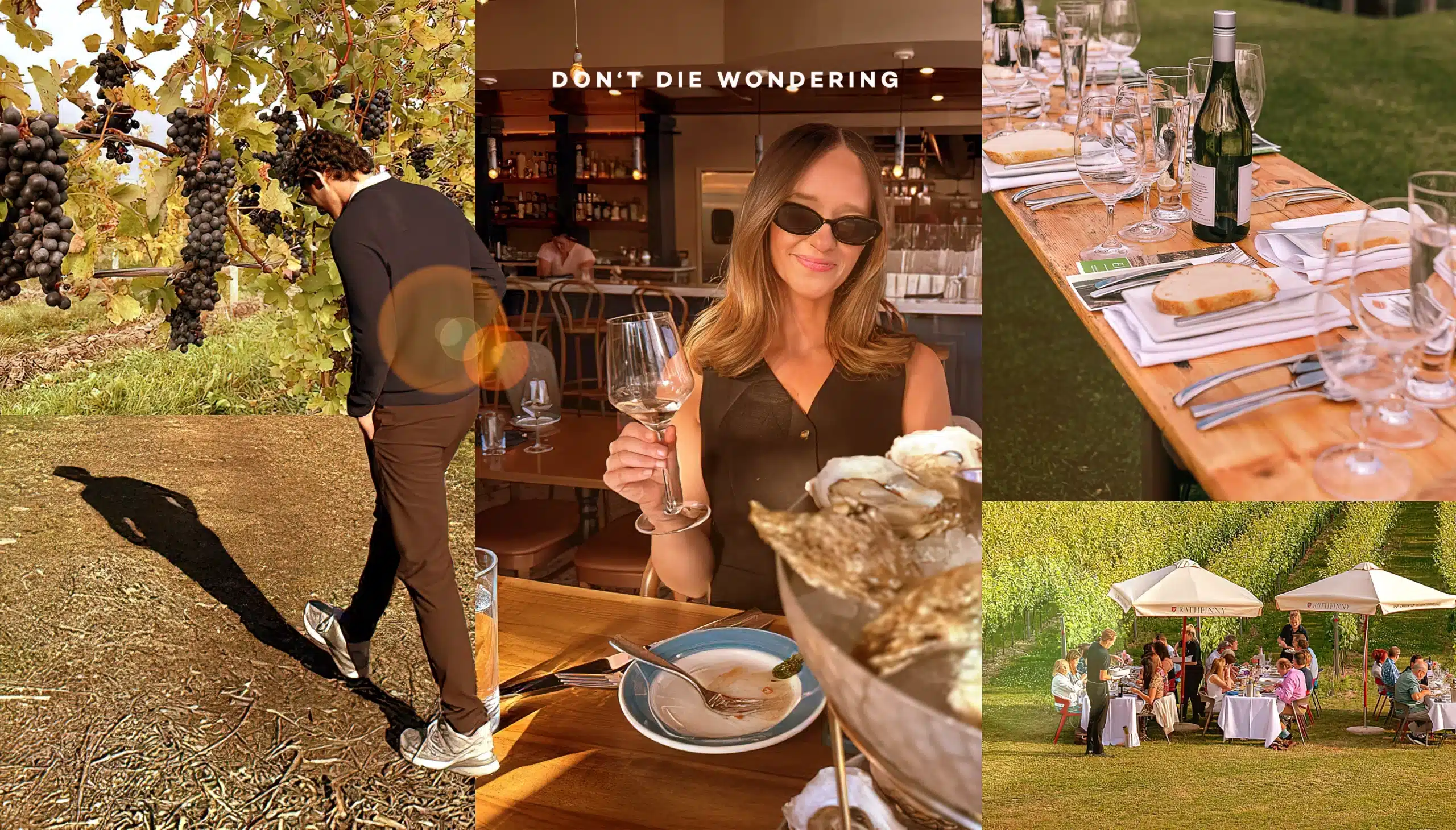Ditch the vino faux pas and become a wine expert with this sommelier crash course.
Wine. It’s the elixir of celebrations, the companion to quiet evenings, and a symbol of refined living. But navigating the seemingly endless rows of bottles at your local fine purveyor or deciphering a wine list at a Michelin-starred restaurant can feel as daunting as deciphering a Jackson Pollock. Let us unveil the secrets behind the swirl, the sniff, and the sip with our exclusive ‘sommelier crash course’.

Demystifying the Grape: A World of Flavour Potential
First things first: every sommelier must have a good understanding the language of grapes. Red wine grapes like Cabernet Sauvignon, the king of Bordeaux, are known for their bold tannins (think a drying sensation on your tongue) and notes of blackcurrant, cedar, and cigar box. Pinot Noir, the heartbreak grape of Burgundy, is lighter-bodied with a beguiling perfume of red cherry, raspberry, and earth. White wine grapes offer a contrasting spectrum. Sauvignon Blanc, hailing from regions like New Zealand’s Marlborough, bursts with refreshing acidity and aromas of grapefruit, gooseberry, and grassy notes. Chardonnay, the chameleon of grapes, can range from unoaked and crisp with hints of apple and citrus to rich and buttery after spending time in oak barrels, developing flavours of vanilla, toast, and hazelnut.
Beyond the Grape: A World Tour in Every Glass
Wine regions play a crucial role in shaping a wine’s character, as every sommelier knows. Bordeaux in France, with its gravelly soil and cool climate, produces Cabernet Sauvignons with pronounced structure and earthy complexity. California’s Napa Valley, with its warmer climate, yields Cabernets that are fruitier and more approachable in their youth. Understanding these regional nuances allows you to choose wines that resonate with your taste preferences.
From Grape to Glass: The Winemaking Journey
The magic of transforming grape juice into wine lies in the art of winemaking. Fermentation, the process where yeast consumes grape sugars and converts them into alcohol, is the foundation. Winemakers can influence this process through techniques like temperature control and the use of different yeast strains. Aging further shapes the wine. Stainless steel tanks preserve the fresh, fruity character of white wines, while oak barrels impart tannins, structure, and toasty flavours to both red and white wines. Understanding these techniques helps you appreciate the complexity behind every sip.
Tasting Like a Pro: Unveiling the Hidden Symphony
Tasting wine is more than just gulping it down, and mastering basic techniques unlocks a world of hidden flavours. Swirling the glass aerates the wine, releasing its aromas. Sniffing allows you to identify primary aromas derived from the grape itself (think red fruit for Pinot Noir), as well as secondary aromas developed during fermentation and aging (like vanilla from oak barrels). Tasting involves taking a small sip, swishing it around your mouth, and identifying flavours that mirror the aromas. Consider the wine’s body (light, medium, or full-bodied), acidity (crisp or soft), and tannins (astringency). With practice, you’ll be able to decipher the unique story each wine tells on your palate.
Food and Wine Pairing: A Match Made in Flavour Heaven
Food and wine pairing is an art form in itself, and as a sommelier, understanding how flavours interact can elevate your dining experience to new heights. Bold red wines with their high tannins stand up well to rich meats like grilled steak or stews. Lighter-bodied reds, with their lower tannins, pair beautifully with tomato-based pasta dishes or grilled poultry. Crisp white wines, like Sauvignon Blanc, enhance the flavours of seafood, while richer whites, like Chardonnay, can handle creamy sauces and even roasted chicken.
Conquering the Supermarket Aisle: Choosing Your Perfect Bottle
Now, let’s translate your newfound knowledge into action! Supermarket wine aisles can be overwhelming, but with the right approach, you can find a bottle that complements your taste and budget. Here are some tips:
- Know Your Budget: Wine prices vary greatly. Determine how much you’re comfortable spending and explore options within that range.
- Consider the Occasion: Are you celebrating a special event or enjoying a casual Tuesday night dinner? Choose a wine that elevates the mood and pairs well with the food.
- Embrace Your Preferences: Do you have a favourite grape varietal, like Merlot or Pinot Grigio? Look for bottles highlighting that grape on the label.
- Explore by Region: Many supermarkets categorise wines by region. If you enjoyed a wine from, say, Italy’s Piedmont region known for its Barolo wines made from the Nebbiolo grape, explore similar options within that section.
- Don’t Be Afraid to Experiment: The beauty of wine lies in its diversity. Try a grape varietal you’re unfamiliar with, or ask the store’s wine specialist for recommendations based on your newfound knowledge. Look for a specialist who is passionate and knowledgeable – they can become a valuable resource in your wine exploration.
- Look Beyond the Label: Flashy labels and brand names don’t always guarantee quality. While some established brands offer reliable options, supermarket own-label bottles can be hidden gems, often representing excellent value for money. Look for awards or certifications displayed on the label, but remember these aren’t a foolproof guarantee.
- Trust Your Instincts: Ultimately, the best way to discover your favourite wines is to taste them! Don’t be afraid to pick a bottle that intrigues you based on the grape varietal, region, or even the label design.
- Enroll in Wine Tasting Classes: Many wine shops and restaurants offer introductory and advanced wine tasting classes. These classes allow you to taste a variety of wines alongside experienced professionals who can guide you through the tasting process and answer your questions.
- Join a Wine Club: Wine clubs offer a curated selection of wines delivered to your doorstep. This is a fantastic way to explore different regions, grape varietals, and styles without the commitment of buying a full bottle. Many clubs also include tasting notes and educational materials to enhance your learning experience.
- Explore Wine Books and Apps: Numerous books and apps cater to all levels of wine enthusiasts. Use them to learn about specific regions, grape varietals, and winemaking techniques.
- Travel to Wine Regions: Immersing yourself in a wine region is an unforgettable experience. Visit vineyards, meet winemakers, and taste wines in their place of origin. This firsthand experience allows you to truly understand the impact of climate, soil, and winemaking traditions on the final product.
Remember, the world of wine is meant to be enjoyed. With a little knowledge and a thirst for discovery, you’ll be well on your way to appreciating the artistry and complexity behind every sip. So, raise a glass, embrace the journey, and cheers to a lifetime of learning and savouring the wonderful world of wine! Here’s to becoming (somewhat) of a sommelier.


